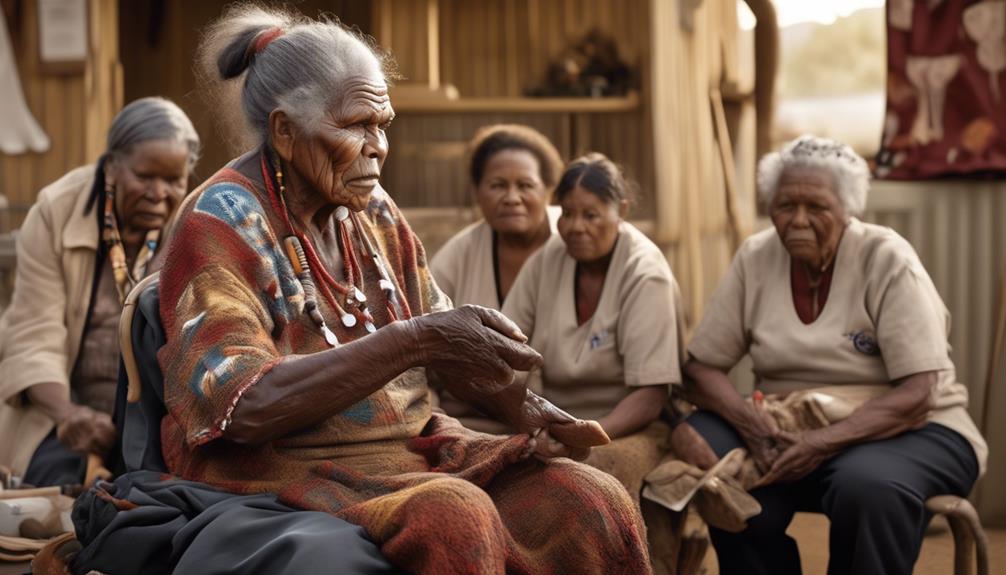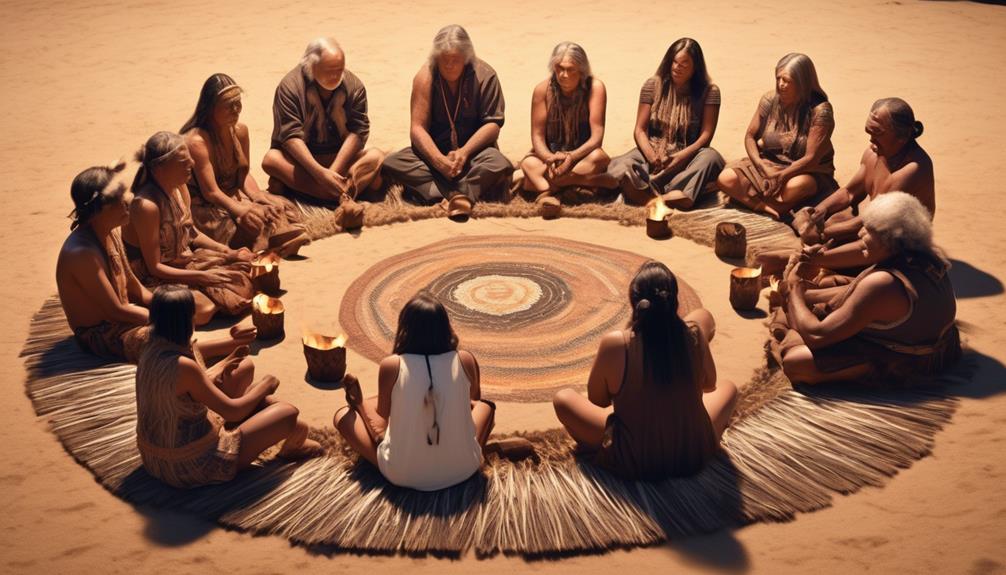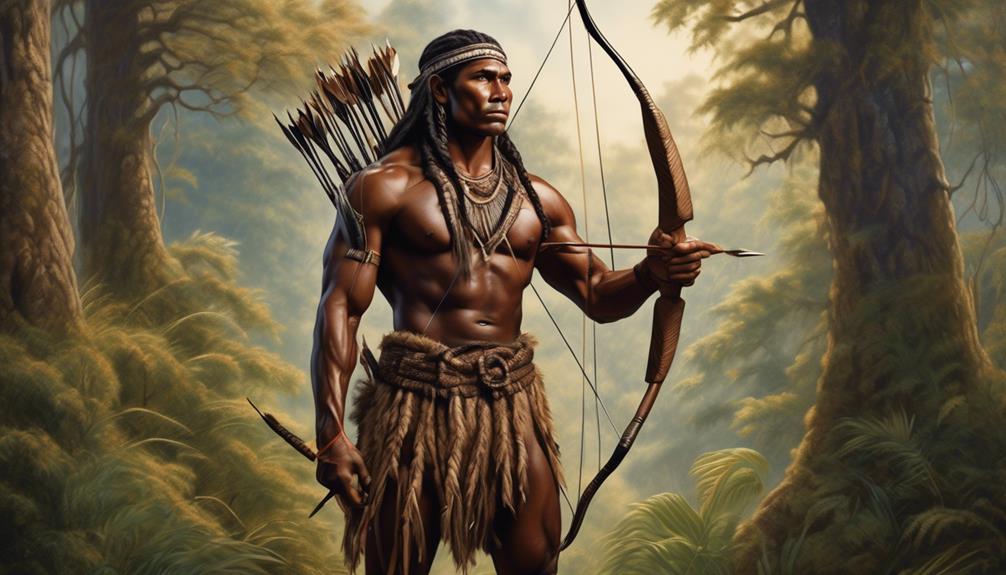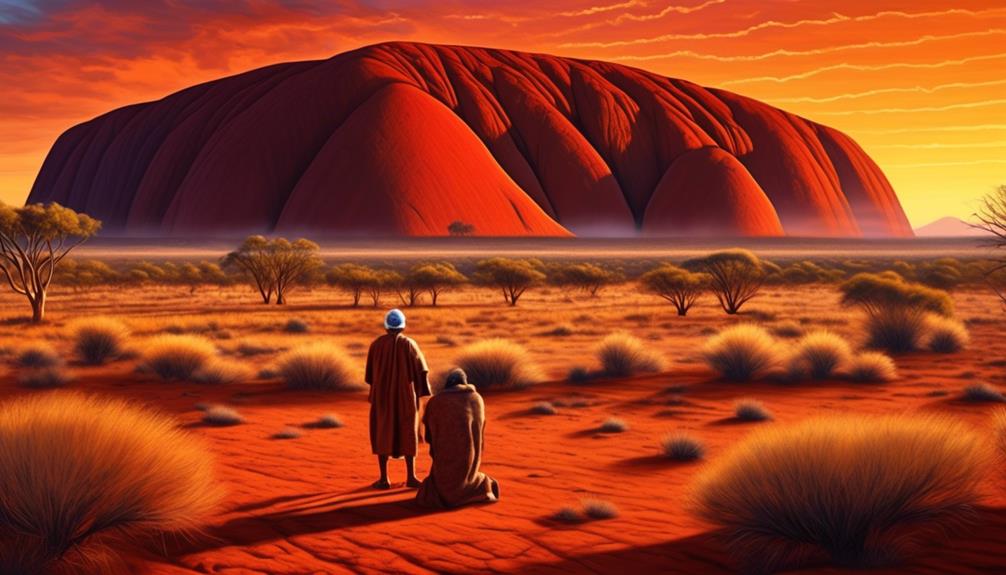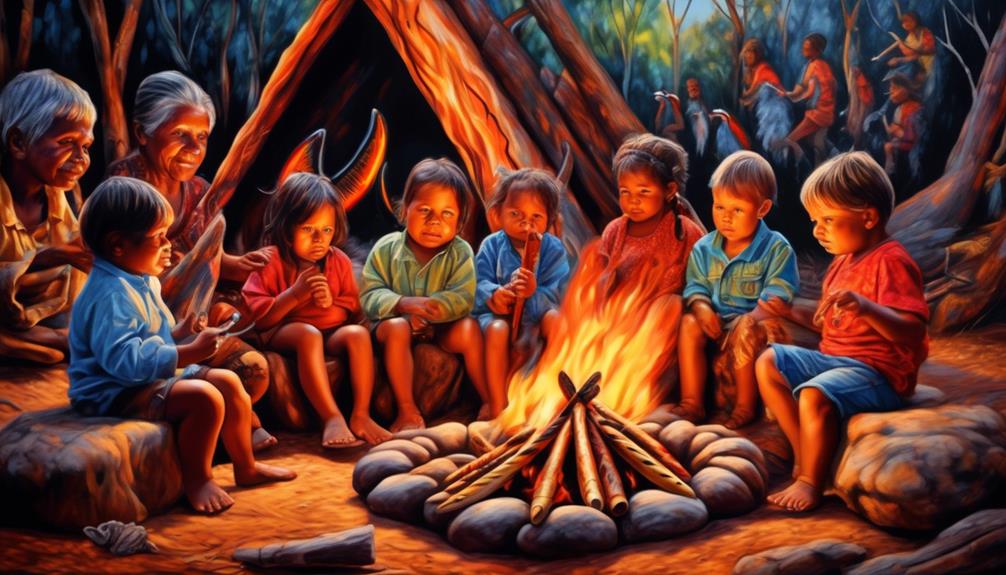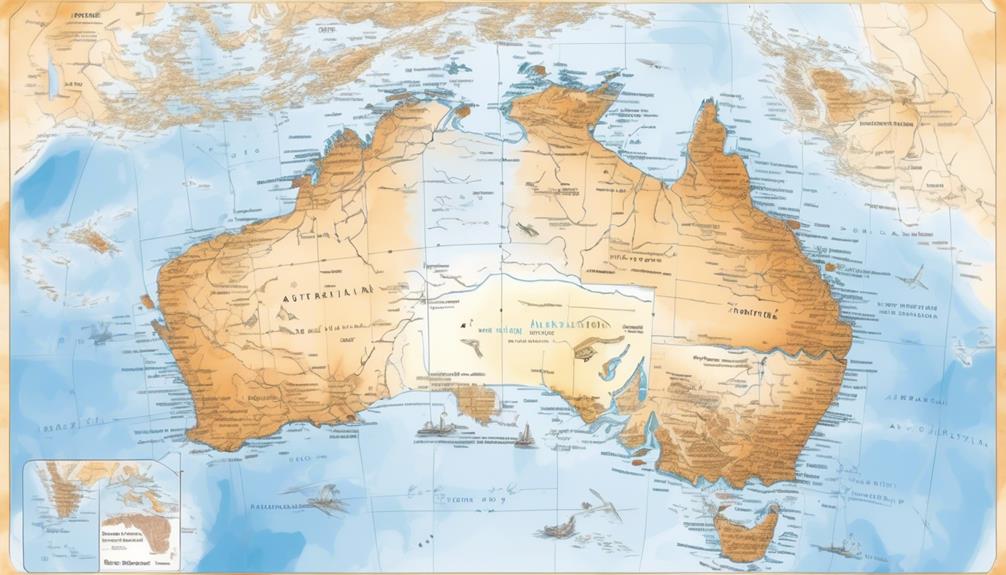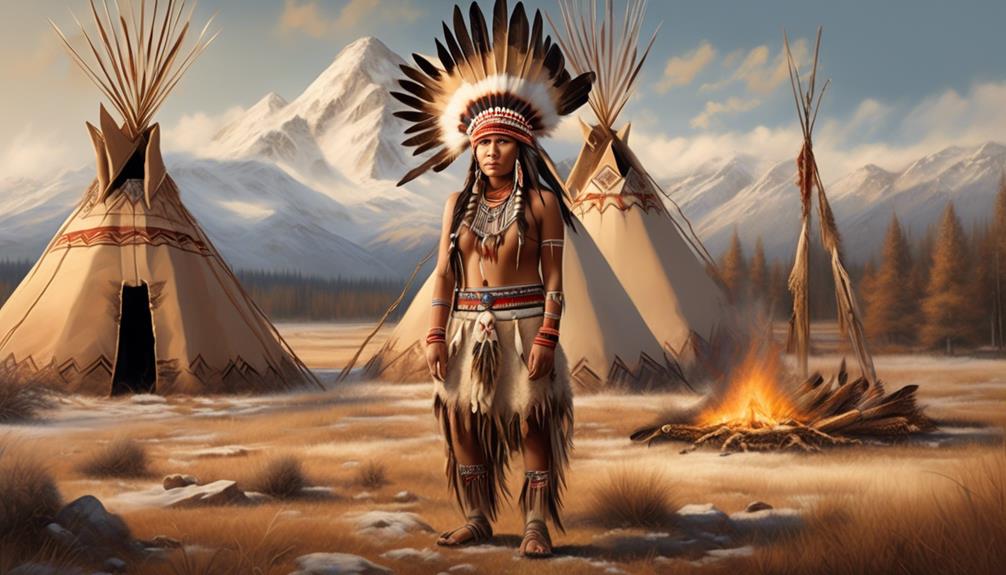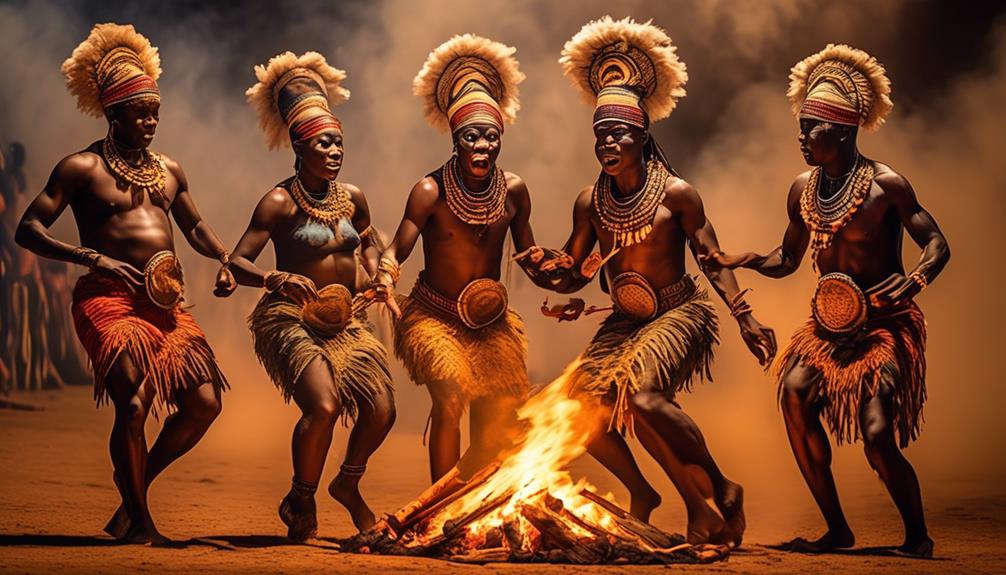You may have heard of the term ‘wisdom of the elders’ at some point, particularly in relation to Aboriginal communities, where this wisdom holds great significance. Aboriginal Elders are crucial in community care services, as they not only care for their peers’ well-being but also preserve and pass down cultural heritage and traditions.
However, providing culturally sensitive care for these revered individuals comes with its own set of challenges. As you consider the unique intersection of age, culture, and care, you'll find that the role of community care services in supporting Aboriginal Elders is a vital and multi-faceted one, with profound implications for the well-being of these communities.
Key Takeaways
- Aboriginal Elders play a crucial role in providing wisdom, guidance, and cultural knowledge to the community.
- Challenges in providing culturally sensitive care include language barriers, differences in traditional healing practices, and bridging communication gaps while respecting cultural beliefs and customs.
- Community care services support the holistic well-being and unique healthcare needs of Aboriginal Elders, providing caregiver support, funding initiatives, protection against elder abuse, and mental health support.
- Cultural knowledge and traditional healing methods should be emphasized and integrated into care services to preserve and pass down cultural knowledge, engage Elders in cultural activities, and foster a sense of identity, belonging, and emotional resilience.
Importance of Aboriginal Elders in Community
Aboriginal Elders play a crucial role in the community by providing wisdom, guidance, and cultural knowledge to the younger generations. This intergenerational knowledge transfer is vital for the preservation of cultural traditions and practices. The Elders serve as living libraries, passing down oral histories, traditional healing methods, and spiritual beliefs, ensuring that these valuable aspects of the community's heritage aren't lost.
Their role goes beyond just imparting knowledge; they also act as mentors, teaching the younger members the customs, protocols, and responsibilities that are integral to the community's way of life.
The presence of Aboriginal Elders in the community is a testament to the resilience and strength of the culture. They're the guardians of traditions, ensuring that the rich tapestry of customs and rituals isn't unraveled by the passage of time. By actively engaging with the younger generations, the Elders instill a sense of pride and belonging, fostering a deep connection to the community's roots.
Their guidance is invaluable in shaping the character and identity of the next generation, ensuring that cultural values are upheld and cherished.
Challenges in Providing Culturally Sensitive Care
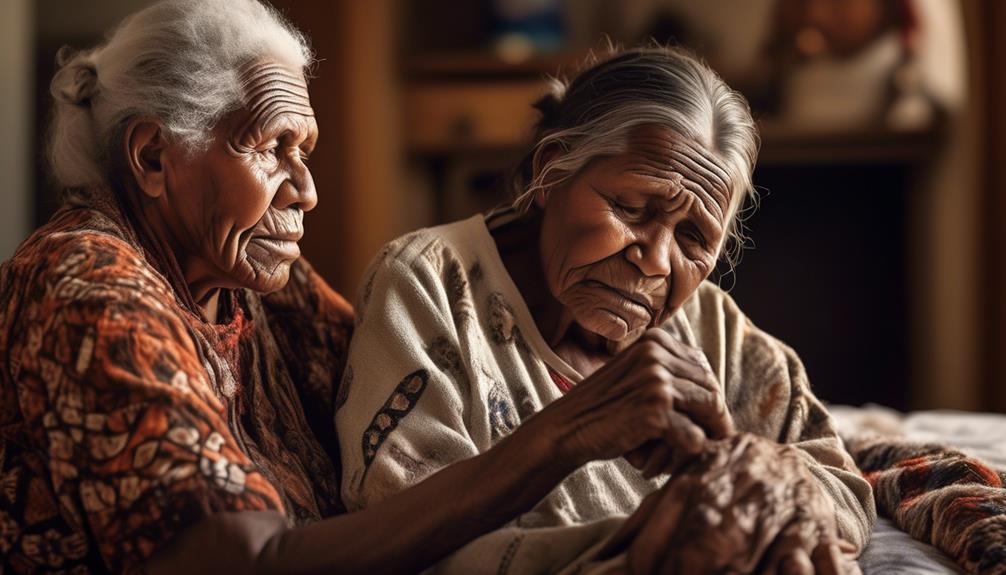
Ensuring culturally sensitive care for Aboriginal Elders presents various challenges, including language barriers, differences in traditional healing practices, and the need for understanding and respect for cultural beliefs and customs. When providing care for Aboriginal Elders, it's essential to maintain cultural competency and address communication barriers effectively.
Here are some specific challenges in providing culturally sensitive care:
- Language Barriers
- Aboriginal Elders may primarily speak their native language, creating difficulties in effective communication with healthcare providers.
- Limited availability of interpreters fluent in the specific Indigenous languages further compounds the issue, hindering the delivery of quality care.
- Differences in Traditional Healing Practices
- Aboriginal Elders may have different perspectives on health and healing, which may not align with Western medical practices.
- Understanding and integrating traditional healing methods while respecting medical best practices can be complex, requiring a delicate balance.
Addressing these challenges necessitates a deep understanding of the cultural nuances and beliefs of Aboriginal communities. Healthcare providers must actively seek to bridge communication gaps and demonstrate respect for traditional healing practices while ensuring the delivery of high-quality care.
Role of Community Care Services
In providing culturally sensitive care for Aboriginal Elders, community care services play a vital role in supporting their holistic well-being and addressing their unique healthcare needs. Caregiver support is a crucial aspect of community care services for Aboriginal Elders. Training and respite services are essential to ensure that caregivers have the necessary skills and support to provide quality care while also taking care of their own well-being. Additionally, funding initiatives are instrumental in enabling community care services to meet the specific needs of Aboriginal Elders, including culturally appropriate meal programs, transportation assistance, and social activities.
Another critical role of community care services is to provide protection against elder abuse. These services are essential in creating safe environments for Aboriginal Elders and offering avenues for reporting and addressing any instances of mistreatment or neglect.
Furthermore, community care services play a vital role in providing mental health support for Aboriginal Elders. This includes access to culturally sensitive counseling, support groups, and outreach programs to address the unique mental health challenges faced by Aboriginal Elders.
Cultural Knowledge and Traditional Healing
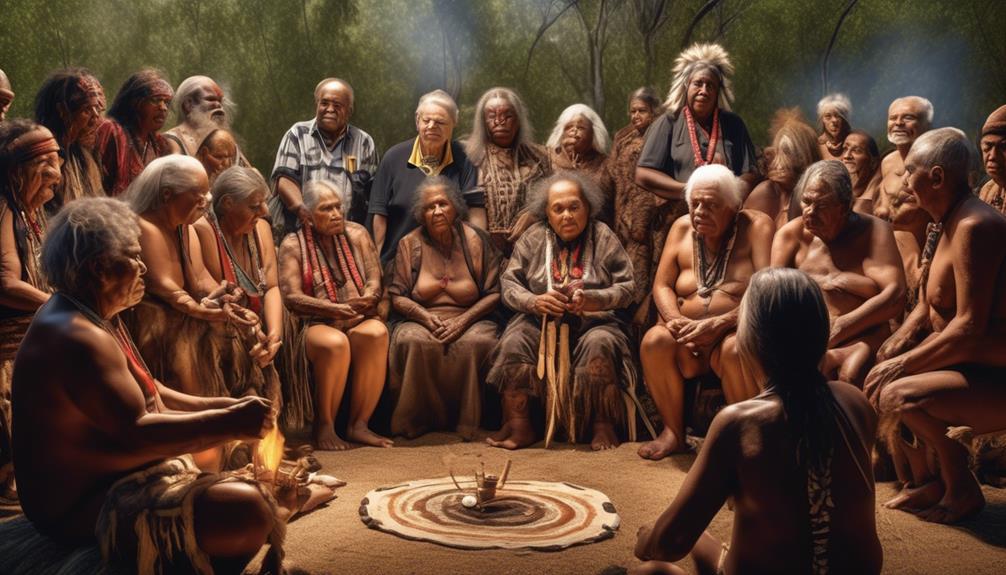
Understanding the importance of cultural knowledge and traditional healing is essential in providing comprehensive care for Aboriginal Elders. Embracing traditional practices and cultural preservation is crucial in ensuring the overall well-being of Aboriginal Elders.
When addressing the cultural knowledge and traditional healing needs of Aboriginal Elders, consider the following:
- Traditional Practices
- Emphasize the significance of traditional healing methods, such as bush medicine and spiritual ceremonies, in promoting holistic health and well-being.
- Integrating these practices into care services can provide a sense of cultural continuity and connection for the Elders, contributing to their overall emotional and spiritual health.
- Cultural Preservation
- Recognize the importance of preserving and passing down cultural knowledge to future generations.
- Engaging Elders in cultural activities and rituals not only fosters a sense of identity and belonging but also serves as a form of therapy, promoting mental and emotional resilience.
Innovations in Elder Care for Aboriginal Communities
Implementing innovative care strategies is crucial for enhancing the well-being of Aboriginal Elders in their communities. Elder empowerment and improved healthcare access are essential components of these innovative strategies. By empowering Elders to actively participate in decision-making regarding their care, they experience a sense of autonomy and dignity, which significantly contributes to their overall well-being. Additionally, ensuring that Elders have easy access to culturally sensitive healthcare services is vital for addressing their unique health needs.
| Innovative Care Strategies | Benefits |
|---|---|
| 1. Elder Empowerment | Fosters a sense of autonomy and dignity for Elders. |
| 2. Culturally Sensitive Healthcare Access | Addresses the unique health needs of Aboriginal Elders. |
| 3. Community-Based Care Programs | Promotes social connectedness and support. |
| 4. Intergenerational Knowledge Sharing | Preserves and passes on traditional wisdom and cultural practices. |
These innovative care strategies not only cater to the physical and mental health needs of Aboriginal Elders but also foster a sense of cultural pride and continuity within the community. By prioritizing Elder empowerment and healthcare access, Aboriginal communities can ensure the well-being of their Elders and preserve their invaluable cultural heritage.
Frequently Asked Questions
How Are Aboriginal Elders Traditionally Honored and Respected Within Their Communities?
Traditionally, Aboriginal elders are honored and respected within their communities through intergenerational relationships and community involvement. Their role as storytellers is crucial, passing down knowledge and history.
Additionally, their deep connection to the land is revered, symbolizing wisdom and guidance. These customs strengthen the fabric of the community, ensuring that the wisdom of the elders is valued and shared for generations to come.
What Specific Cultural Practices or Protocols Must Be Considered When Providing Care for Aboriginal Elders?
When providing elder care, cultural considerations are crucial. Understanding and respecting specific elder care practices is essential.
You must honor their traditions and customs, ensuring that care aligns with their cultural protocols. This includes respecting their spiritual beliefs, traditional healing methods, and communication styles.
Incorporating these cultural practices into their care shows respect and understanding for their unique needs.
Are There Any Traditional Healing Methods or Ceremonies That Are Commonly Used by Aboriginal Elders and Community Care Services?
When it comes to traditional healing, cultural ceremonies are often used by aboriginal elders and community care services. These methods hold deep significance and are integral to the overall well-being of the community.
Traditional healing practices may include ceremonies such as smudging, sweat lodges, and traditional dances, each serving a unique purpose in promoting healing and wellness.
These ceremonies are rooted in centuries of tradition and are highly valued within the community.
How Do Community Care Services Incorporate Traditional Knowledge and Practices Into Their Care for Aboriginal Elders?
Incorporating traditional healing methods and cultural protocols into elder care approaches involves community engagement. This often includes consultations with elders and knowledge keepers to ensure that traditional practices are respected and integrated into care services.
What Are Some Innovative Approaches to Elder Care That Have Been Successful in Aboriginal Communities?
When it comes to innovative approaches to elder care, cultural integration and holistic wellness play a vital role. By combining traditional practices with modern techniques, aboriginal communities have seen successful results.
This approach respects the elders' cultural heritage while addressing their overall well-being. It's a harmonious blend of tradition and innovation that has proven to be effective in providing comprehensive care for the elder members of the community.
Conclusion
In conclusion, Aboriginal elders play a pivotal role in community care services, providing cultural knowledge and traditional healing.
Despite the challenges, innovative approaches are essential for ensuring culturally sensitive care for the elderly in Aboriginal communities.
It's time to tap into the treasure trove of traditional wisdom and embrace elder care innovations for the betterment of all.
Mary is a passionate writer who brings creativity and a fresh perspective to our team. Her words have the power to captivate and inspire, making her an essential contributor to our content. Mary’s commitment to storytelling and dedication to promoting Indigenous culture ensures that her work touches the hearts of our readers. We’re fortunate to have her as part of our team.
